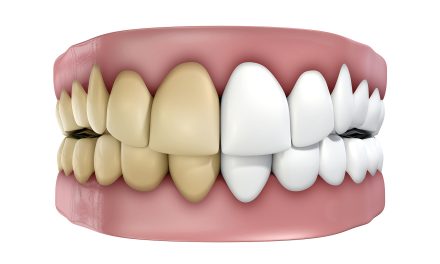Dental implants can be a life-changing solution for missing teeth, but the cost can be a concern for many people.
Dental insurance can help offset these expenses, but coverage varies widely between plans. Most dental insurance plans cover implants partially, typically paying 50% of the cost up to the plan’s annual maximum.

Some dental insurance plans offer better coverage for implants than others. Full coverage dental insurance that covers implants can be very useful if you have difficulty chewing or experience pain from dentures.
When choosing a plan, it’s important to compare factors like monthly premiums, coverage percentages, waiting periods, and annual maximums.
For those without dental insurance that covers implants, there are other options to help manage costs. These include using funds from Flexible Spending Accounts (FSAs) or Health Savings Accounts (HSAs), seeking care at dental schools, or looking into dental discount plans.
Key Takeaways
- Dental insurance often covers about 50% of implant costs up to the plan’s annual maximum.
- Comparing plans based on premiums, coverage, waiting periods, and maximums helps find the best option.
- Alternative payment methods like FSAs, HSAs, and dental discount plans can help manage implant costs.
Understanding Dental Insurance
Dental insurance plans come in different types and offer varying levels of coverage. Knowing the basics can help you choose the right plan and understand what services are typically included.
Types of Dental Insurance Plans
Dental insurance plans fall into three main categories: HMO, PPO, and Indemnity.
HMO plans usually have lower premiums but limit your choice of dentists. PPO plans offer more flexibility in choosing providers. Indemnity plans give the most freedom but often cost more.
Some plans have waiting periods before covering certain procedures. Annual maximums and deductibles also affect your out-of-pocket costs. Dental implant coverage varies widely between plans.
Differences between HMO, PPO, and Indemnity Plans
HMO plans require you to choose a primary dentist from a network. They typically have no deductibles and lower copays.
PPO plans let you see out-of-network dentists, but at higher costs. They often have deductibles and coinsurance.
Indemnity plans allow you to see any dentist. They usually have higher premiums and deductibles. These plans may require you to pay upfront and submit claims for reimbursement.
PPO plans are popular for their balance of flexibility and cost. They often cover preventive care at 100% and basic procedures at 80%.
What Does Dental Insurance Typically Cover?
Most dental insurance plans cover preventive care like cleanings and x-rays at 100%. Basic procedures like fillings are often covered at 80%. Major procedures like crowns may be covered at 50%.
Cosmetic treatments are usually not covered. Implant coverage is limited in many plans. Some may cover parts of the implant process, while others exclude it entirely.
Annual maximums typically range from $1,000 to $2,000. Once you reach this limit, you pay all costs out-of-pocket. Some plans offer rollover benefits for unused amounts.
Dental Implants and Insurance Coverage
Dental implants offer a permanent solution for missing teeth. They can be costly, but some insurance plans provide coverage. The type and extent of coverage varies between policies.
Defining Dental Implants
Dental implants are artificial tooth roots surgically placed in the jaw. They support replacement teeth or bridges. Implants look and function like natural teeth.
The implant is usually made of titanium. It fuses with the jawbone over time. This process is called osseointegration. It creates a strong foundation for the new tooth.
Implants can replace single teeth or support full dentures. They prevent bone loss and maintain facial structure. This makes them a popular choice for many patients.
Implant Procedure and Care
The implant procedure involves several steps:
- Initial consultation and planning
- Placement of the implant
- Healing period (osseointegration)
- Attachment of the artificial tooth
The process can take several months. Proper care is crucial for long-term success. This includes regular brushing, flossing, and dental check-ups.
Dental insurance for implants may cover parts of the procedure. Some plans cover 50% of the cost. But they often have annual limits on coverage.
Implants vs. Dentures
Implants and dentures are both options for replacing missing teeth. Here’s a comparison:
| Feature | Implants | Dentures |
|---|---|---|
| Permanence | Fixed in jaw | Removable |
| Comfort | More natural feel | Can be uncomfortable |
| Bone preservation | Prevent bone loss | May lead to bone loss |
| Cost | Higher upfront cost | Lower initial cost |
| Longevity | Can last a lifetime | Need replacement every 5-7 years |
Dental implants cost more initially. But they often prove more cost-effective in the long run. They don’t require special care products or adhesives like dentures do.
Insurance coverage for implants is becoming more common. But it’s still less widespread than coverage for dentures. Patients should check their policies carefully.
Best Dental Insurance for Implants
Dental implants can be expensive, but some insurance plans offer coverage. Several top providers stand out for their implant benefits.
When choosing a plan, it’s important to look at coverage levels and waiting periods.
Top Providers for Implant Coverage
Delta Dental is a leading choice for implant insurance. They offer plans in all 50 states with good in-network and out-of-network coverage.
Ameritas provides plans that cover up to 50% of implant costs after a waiting period. Their coverage increases over time, which can benefit long-term customers.
Spirit Dental offers fast approval and coverage starting the day after enrollment. This can be helpful for those needing implants soon.
Denali Dental has plans with high annual maximums, which is useful for costly implant procedures.
Evaluating Insurance Plans for Implant Procedures
When comparing plans, look at the annual maximum benefit. Higher limits help cover more of the implant cost.
Check the percentage of coverage for implants. Some plans may cover 50% after deductibles.
Waiting periods are common for major procedures like implants. Some insurers increase coverage the longer you’re enrolled.
Consider plans that cover related procedures such as bone grafts, crowns, and anesthesia. This can lower out-of-pocket costs.
Network coverage is important. In-network dentists often offer lower rates. But also check if the plan allows out-of-network providers for more flexibility.
Policy Details to Consider
Dental insurance policies have several key factors that affect coverage for implants. Paying attention to these details helps you choose a plan that fits your needs and budget.
Annual Maximums and Deductibles
Dental insurance plans often have annual maximums between $1,000 and $1,500. This amount may not cover the full cost of implants, which can range from $1,500 to $6,000 per tooth.
Deductibles are the amount you pay before insurance kicks in. These typically range from $50 to $200 per year for an individual.
Some plans offer higher annual maximums specifically for implants. Look for policies with at least $1,500 in lifetime implant coverage.
Consider plans with lower deductibles if you expect to need implants soon. This can help reduce your out-of-pocket costs.
Waiting Periods and Coverage Limits
Many dental insurance policies have waiting periods for major services like implants. These can range from 6 to 12 months after your policy starts.
Some plans may limit the number of implants covered per year or over your lifetime. Check if there are restrictions on replacing existing implants.
Look for plans with shorter waiting periods if you need implants soon. Some policies waive waiting periods for new members.
Be aware of age limits or exclusions for pre-existing conditions that might affect implant coverage.
Preventive Care and Major Services
Dental insurance typically categorizes services into tiers: preventive, basic, and major. Implants usually fall under major services.
Preventive care often includes cleanings, exams, and X-rays. These services are usually covered at 100% with no deductible.
Basic services like fillings may be covered at 80%, while major services like implants are often covered at 50%.
Regular preventive care can help avoid the need for implants. Choose a plan that encourages preventive visits through low or no copays.
Look for policies that classify implants as major services rather than cosmetic procedures to ensure coverage.
Cost Considerations
Dental implants can be expensive. Insurance may help reduce costs, but patients often still face significant out-of-pocket expenses.
Affording Dental Implants with Insurance
Dental insurance with implant coverage can reduce costs. Many plans cover part of the procedure. Patients should check their policy details carefully.
Waiting periods often apply. Some insurers require 12 months before covering implants. Patients may need to budget for this delay.
Annual maximums impact coverage. Most plans have limits between $1,000 and $2,000 per year. Implants often cost more than this cap.
Out-of-Pocket Costs and Premiums
Dental implants can cost $1,600 to $2,200 per tooth without insurance. Full mouth treatments may reach $20,000 or more.
Insurance helps but doesn’t eliminate costs. Patients typically pay:
- Deductibles
- Copayments
- Costs above annual maximums
Higher premiums may offer better coverage. Patients should compare plans carefully. Some offer 50% coverage for major procedures like implants.
Dental savings plans are an alternative. These reduce costs through pre-negotiated rates with dentists. They often have no waiting periods or annual limits.
Additional Financial Strategies
When dental insurance falls short, other options can help cover implant costs. These methods offer flexibility and potential savings for those seeking dental implants.
Dental Savings Plans
Dental savings plans provide discounts on dental procedures. Unlike insurance, these plans have no yearly limits or waiting periods. Members pay an annual fee to access a network of dentists offering reduced rates.
Dental savings plans can cut implant costs by 20-50%. They often cover pre-existing conditions and cosmetic procedures. There’s no paperwork to file, and you pay the discounted rate directly to the dentist.
These plans work well for those needing immediate care. They’re also good for people who’ve reached their insurance annual maximum.
Flexible Spending Accounts and Payment Plans
Flexible Spending Accounts (FSAs) let you set aside pre-tax dollars for medical expenses. This can include dental implants.
FSAs can lower your overall costs by reducing your taxable income.
You can use these funds to pay for implants not covered by insurance.
Many dentists offer payment plans for implants. These plans spread the cost over several months or years.
Some are interest-free if paid within a certain timeframe.
Affordable dental insurance may cover part of the implant cost. Combine this with an FSA and payment plan for maximum savings.
Choosing the Right Dental Provider
Picking the right dental provider is key for getting implants covered by insurance. The choice impacts costs and care quality.
In-Network vs. Out-of-Network Dentists
In-network dentists have agreements with insurance companies. They often charge less for services.
This can mean lower out-of-pocket costs for patients.
Out-of-network dentists may cost more. But they might offer more flexible treatment options.
Some insurance plans cover out-of-network care at lower rates.
Patients should check their plan’s network before choosing a dentist. Many dental insurance companies have online tools to find in-network providers.
It’s smart to compare costs between in-network and out-of-network dentists. This helps make an informed choice based on budget and needs.
Customer Service and Satisfaction
Good customer service is crucial when getting dental implants. Patients should look for dentists with positive reviews and high satisfaction rates.
Dental offices should be able to explain insurance coverage clearly. They should help patients understand their benefits and costs.
Some insurance providers offer satisfaction guarantees. This can give patients peace of mind about their care.
Patients can ask about a dentist’s experience with implants. More experienced providers may offer better results and smoother insurance processes.
It’s wise to check if the dentist offers payment plans or financing options. This can help manage costs not covered by insurance.
Special Cases in Dental Implant Insurance
Dental implant insurance often includes special cases that can affect coverage. These cases may involve additional procedures or specific types of implants.
Coverage for Bone Grafting
Bone grafting is sometimes needed before dental implant surgery. This procedure adds bone to the jaw to support the implant.
Some dental plans cover bone grafting as part of implant treatment.
The coverage amount can vary. It may be a percentage of the cost or a set dollar amount.
Patients should check their policy details carefully.
Some insurers may require proof that bone grafting is medically necessary. This might involve x-rays or a dentist’s statement.
If approved, the grafting procedure could be partly or fully covered.
Insurance for Implant-Supported Crowns
Implant-supported crowns are the visible part of a dental implant. They’re placed on top of the implant post.
Many dental plans treat these crowns differently from the implant itself.
Some insurers classify implant-supported crowns as major dental work. This means they might cover 50% of the cost, after the deductible is met.
Other plans may have a waiting period for crown coverage. This can range from a few months to a year.
Patients should factor in these waiting times when planning implant treatment.
It’s important to note that annual maximums can limit coverage for both the implant and crown. Patients may need to spread treatment over two plan years to maximize benefits.
Comparing Dental Insurance Providers
Dental insurance providers offer different plans and benefits for implant coverage. Industry ratings and customer reviews can help compare options.
Direct Comparison of Plans and Benefits
Delta Dental stands out for implant coverage. They offer in-network and out-of-network options in all 50 states.
Some plans cover implant-related services like anesthesia, consultations, and x-rays. Coverage can vary by provider and plan.
Annual limits often range from $1,000 to $1,500. This may not fully cover implant costs, which can be $1,500 to $6,000 per implant.
Cigna and MetLife provide implant coverage in some plans. Humana Extend offers add-on coverage for major services like implants.
Industry Ratings and Reviews
J.D. Power rates dental insurance providers on customer satisfaction. Their surveys cover claims, costs, and customer service.
The National Association of Insurance Commissioners (NAIC) tracks consumer complaints. This data can reveal issues with specific insurers.
DentaQuest and Physicians Mutual receive positive reviews for their implant coverage. Customer feedback often highlights claim processing speed and coverage clarity.
Online reviews can offer insights into real customer experiences. They may reveal strengths and weaknesses not apparent in official ratings.
Staying Informed About Dental Coverage
Dental insurance plans can be complex. It’s important to stay up-to-date on your coverage details. This helps you make smart choices about your dental care.
Many plans have annual maximum benefits. These set a limit on how much the insurer will pay each year. Knowing this amount helps you plan treatments.
Some plans offer comprehensive coverage for implants. Others may only cover basic services.
It’s crucial to check what your plan includes.
Dental savings plans are an alternative to traditional insurance. These programs often provide discounts on various dental treatments.
Here are key points to remember:
- Review your plan’s coverage limits regularly
- Ask about coverage for specific procedures like implants
- Compare different plans to find the best fit
- Look into dental savings plans as an option
DentalInsurance.com can be a helpful resource. It provides information on plans that cover implants and other treatments.
Stay in touch with your insurance provider. They can explain changes to your coverage. This knowledge helps you make informed decisions about your dental health.
Frequently Asked Questions
Dental insurance coverage for implants varies widely between plans and providers. Many people have questions about how to get the best coverage for this expensive procedure.
Does any dental insurance offer full coverage for implants?
Most dental plans don’t cover 100% of implant costs. Some plans may cover up to 50% of the procedure. Delta Dental offers good coverage for implants in many of its plans.
Patients often need to pay a portion out-of-pocket. Annual maximums and lifetime limits may apply.
Are there dental insurance plans that cover implants without a waiting period?
Few plans cover implants right away. Many require a 6-12 month waiting period before covering major procedures like implants.
Some employers offer plans with no waiting period. Individual plans typically have longer waits for implant coverage.
Can medical insurance policies provide coverage for dental implants?
Medical insurance may cover implants in certain cases. This usually applies when implants are needed due to an accident or medical condition.
Patients should check with their medical insurer. Coverage isn’t common but can happen in specific situations.
What are the best dental insurance options for seniors needing implants?
Seniors often need implants but may face high costs. UnitedHealthcare’s DentalWise 2000 plan offers a $1,500 lifetime benefit for implants.
AARP dental plans through Delta Dental can be a good choice. These plans often have higher coverage limits for seniors.
How are dental implants categorized under insurance plans in the United States?
Most insurance plans classify implants as a major procedure. They often fall under the same category as crowns, bridges, and dentures.
This categorization affects coverage levels and waiting periods. Major procedures usually have lower coverage percentages than routine care.
Which top dental insurance companies include implants in their coverage?
Delta Dental is known for good implant coverage. Their plans often cover implants at 50% after a waiting period.
Cigna, Humana, and Guardian also offer plans with implant coverage. The exact coverage varies by plan and location.


















